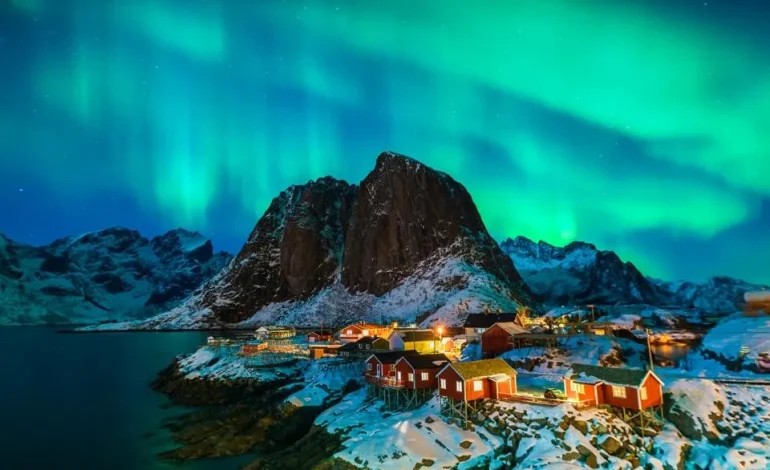Northern Lights Visible Tonight in Several US States as Geomagnetic Storm Hits

The Northern Lights, also known as aurora borealis, may be visible across parts of the continental United States tonight, Wednesday, Nov. 6, as space weather experts forecast favorable conditions for a geomagnetic storm, Forbes reports.
The storm is the result of a coronal mass ejection (CME)—a cloud of charged particles emitted by the sun—following a solar flare on Sunday, Nov. 3. The National Oceanic and Atmospheric Administration’s (NOAA) Space Weather Prediction Center has issued a G1 geomagnetic storm watch, indicating that the aurora will be visible in areas with clear skies from northern-tier states.
Regions most likely to experience the Northern Lights include Washington, Idaho, Montana, North Dakota, South Dakota, Minnesota, Wisconsin, Michigan, and Maine. The aurora may be visible farther south, depending on the strength of the storm. If the storm intensifies to a G2 level, the Northern Lights could reach as far south as New York and Idaho.
The geomagnetic storm is expected to begin between 00:00 and 03:00 UTC, which translates to 7-10 p.m. EST, 6-9 p.m. CST, 5-8 p.m. MST, and 4-7 p.m. PST. This storm is predicted to feature a Kp index of 5, which indicates that the aurora will be brighter and more active than usual, with displays potentially visible further from the poles. After the initial storm, the Kp index will gradually decrease, but auroral activity will likely persist.
For those interested in tracking the aurora’s progress, NOAA provides a real-time aurora forecast that shows the predicted viewlines for tonight and the next 30 minutes. Space weather experts like Dr. Tamitha Skov and Dr. Ryan French, as well as apps such as Aurora Now and Hello Aurora, can also offer updates.
While watching the Northern Lights, photographers should note that the aurora often appears more vibrant in photos than to the naked eye, especially if viewed from areas with light pollution. To capture the best images, it is recommended to use a smartphone or camera with “Night Mode” and a tripod to stabilize the shot. A long exposure of 5-10 seconds is typically necessary to capture the vivid colors of the aurora.
The Northern Lights occur when charged particles from the sun interact with Earth’s magnetic field, creating colorful displays near the poles. With the sun currently in its “solar maximum” phase, which will last until 2026, solar flares and CMEs are expected to occur more frequently, providing more opportunities to witness this spectacular natural phenomenon in the coming years.








